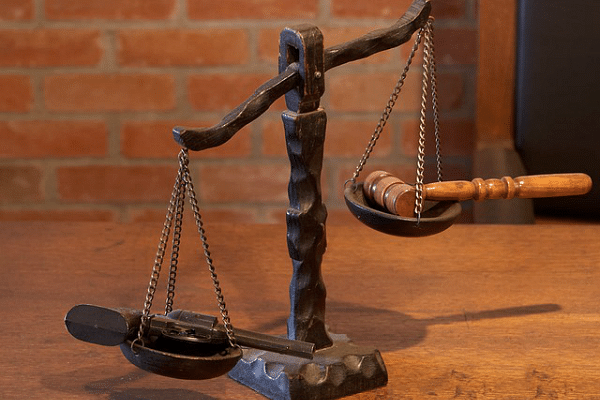
How To Make Sure PILs Are Actually For Public Interest?
No one should be allowed to bypass the judicial hierarchy and go to the Supreme Court directly for redressal except in tightly defined circumstances warranting a PIL.
It was P N Bhagwati, Chief Justice of India during 1985-86, who first converted a complaint on a postcard addressed to him, into a public interest litigation (PIL). This heralded the practice of a citizen rushing to the Supreme Court with grievances, real and imaginary, self-serving and altruistic.
The apex court has on numerous occasions warned against the misuse of PIL as well as against morphing it into “private” interest litigation to settle personal scores or in sheer pique. But the court has been magnanimous in going through with hearing PILs despite a lack of merit writ large on some of them. Therefore, it is time Parliament stepped in to legislate on it.
In January 2016, when Prashant Bhushan filed a PIL challenging the allotment of 4G spectrum to Reliance Jio, their lordships asked him how filing PILs could be the sole activity of his non-governmental organisation, the Centre for Public Interest Litigation (CPIL). It went on to observe that in the future it will entertain a PIL petition from CPIL only if the five eminent jurists proudly presented as scrutinisers by Bhushan filed an affidavit testifying to substantial public interest in the matter agitating CPIL.
One wonders if the Supreme Court has ever since made this a norm across the board for anyone filing a PIL.
Bhushan has to his credit upwards of 500 PILs. His latest one was on the Rafale deal involving the governments of India and France. The Supreme Court dismissed it along with a bunch of similar petitions on the grounds that each one of them was speculative and without evidence of wrongdoing.
PILs are entertained by the Supreme Court under Article 32 of the Constitution. Its operative part, enshrined in sub-section (2), reads:
The Supreme Court shall have power to issue directions or orders or writs, including writs in the nature of habeas corpus, mandamus, prohibition, quo warranto and certiorari, whichever may be appropriate, for the enforcement of any of the rights conferred by this Part (the chapter on fundamental rights).
In other words, a citizen of India can directly go to the Supreme Court if any of his or her fundamental rights are infringed. Not even in his wildest dreams would Justice Bhagwati have reckoned with the possibility of a PIL being hijacked by the overexcited and the restless.
To be sure, the government of the day has often been halted in its tracks in carrying on with its high-handedness. And rightly so, because when the scarce resources of the nation are frittered away through favouritism, the fundamental rights of all innocent citizens are directly or indirectly affected. Thus, cancellation of 122 2G licences in February 2012 by the Supreme Court in response to a PIL to this effect was a setback to the Manmohan Singh government. Licenses were granted in an arbitrary manner to a chosen few, who included sundry builders and fruit merchants of the world and who had nothing to do with the telecom industry, much less have expertise or experience in it. The only purpose was to enable them to sell these licenses to real telecom operators at a huge profit.
Cancellation of some 200 coal blocks by the Supreme Court in August 2014 was of a piece with the 2G licence cancellation. Not only were the coal blocks allotted to the favoured few, but more gallingly, gratis without any guarantees extracted from the allottees on passing on the benefits of lower cost to the consumers.
Public interest was writ large in these two cases. The Supreme Court, while cancelling the licences and coal blocks, had left it to the criminal court to decide on actual corruption charges. The Narendra Modi government was left red-faced when the trial court let off A Raja and his Dravida Munnetra Kazhagam cohorts, who had scripted the monumental 2G scam for want of evidence.
The point here is that no one should be allowed to bypass the judicial hierarchy and go to the Supreme Court directly for redressal except in tightly defined circumstances warranting a PIL. But that is what happened in the Rafale case, where the petitioners did not have evidence of arbitrariness in government decision-making, unlike in the 2G and coalgate cases.
The Supreme Court directive to CPIL to file an affidavit by five of its eminent jurists is a weak remedy. Parliament must, by law, set up an official CPIL tasked with the role of vetting all PILs before they are allowed to be presented to the apex court. An in-house authority within the judiciary would always be amenable to suspicion, if not arm-twisting or steamrollering.
There have been numerous decisions of courts in India saying that writ petition to High Courts under Article 227 will not be entertained unless the petitioner has exhausted his statutory remedies. Thus, a central excise assessee or a central sales tax assessee, for that matter, simply could not rush to the High Court with a writ petition, thus bypassing the assessing officer and others above him in hierarchy in the appellate chain.
Likewise, PILs (entertained by way of a writ under Article 32 by the Supreme Court) should not be entertained unless one has exhausted his or her regular legal remedies. If Bhushan or the Congress party had any evidence of wrongdoing by the Modi government in the Rafale deal, they should have filed an FIR to set the criminal justice system rolling. Instead, Bhushan and others rushed headlong to the Supreme Court. Thankfully, they were rebuffed by it.